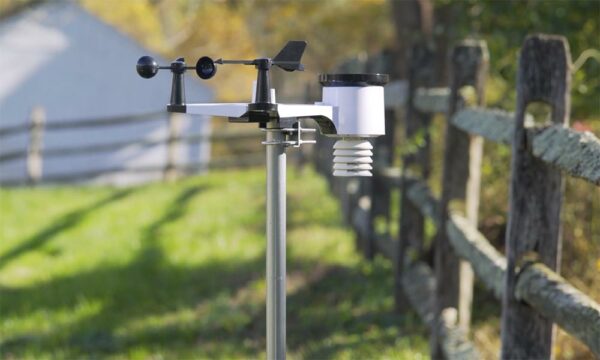Ever wanted to monitor the weather like a professional meteorologist? With the right tools and understanding, you can. This guide will introduce you to the world of personal weather stations, assisting you in choosing the best one for your needs.
How to Choose a Weather Station
When choosing a personal weather station, the most important factor to consider is accuracy. The KestrelMet 6000 is a top-tier choice known for its precise measurements. It offers an extensive array of readings, serving not only weather enthusiasts but also professional meteorologists, researchers, and more.
Another factor to consider is your budget, and what kind of data you are most interested in collecting. Different models offer different features, so it’s worth comparing the benefits of each before making your final decision. Keep in mind that your budget will also determine how advanced your weather station may be. The good news is that you can get robust personal weather stations like KestrelMet 6000 without going bankrupt.
What Should a Good Weather Station Measure or Monitor?
A personal weather station can be as simple or as complex as you need it to be. At their most basic, these stations measure and track data like wind speed, wind direction, temperature, and humidity. Advanced weather stations, like the KestrelMet 6000, offer a broader range of metrics, including Wind Chill, Wet Bulb Globe Temperature (WBGT), Heat Index, and more.

Should You Choose Wi-Fi or Cellular?
Both Wi-Fi and cellular weather stations can provide excellent results, depending on your specific needs. A Wi-Fi station collects data and transmits it via your home internet connection. It’s worth noting that these devices require a stable Wi-Fi connection to operate correctly.
On the other hand, a cellular personal weather station collects data at the station and sends it to a cell tower. This data is then forwarded to a central location for processing. These stations can be useful for individuals, businesses, and meteorologists who need accurate local weather information.
In deciding between the two, consider whether you plan to collect data in rural or urban areas. You’ll also want to think about ease of setup and your budget.
Weather Station Placement
Location is crucial when it comes to your weather station’s effectiveness. Ideal installation spots for weather stations are usually on level ground, within a ventilated radiation shield, at a height between 4’1 and 6’7 above the ground, and away from trees or structures.
However, if your location doesn’t meet these conditions, don’t worry! Whether you live in a rural or suburban setting, there are workarounds to help you find the best spot.
For example, in suburban areas, you might leverage the height of your chimney to mount an extension pole. From there, you can secure the weather station at a greater height than any surrounding obstructions.
Basic Weather Tracking Techniques
Understanding the weather is more than just checking if it’s sunny or rainy outside. It requires a collection of numerous data points and knowing how they correlate. This will help provide you with an accurate and comprehensive report.
Personal weather stations can help you explore the world of meteorology right from your backyard. Here’s a more detailed look at basic weather tracking techniques.
Data Collection
At the heart of weather tracking is data collection. A personal weather station uses a suite of remote sensors that collect real-time information on various weather conditions directly from your surroundings. This includes temperature, humidity, wind speed, wind direction, and rainfall. Some more advanced stations like KestrelMet 6000 also offer additional readings like WBGT, heat index, etc.
Microclimate Monitoring
One of the main advantages of personal weather stations is their ability to track the unique microclimates that exist in your backyard. A microclimate is a local atmospheric zone where the climate differs from the surrounding area. Factors like topography, vegetation, and artificial structures can create these microclimates.
Observing these lets a personal weather station give you a more precise forecast tailored to your location.
For instance, a heavily shaded area in your garden may have a different humidity and temperature profile than a sunny spot just a few meters away. Understanding these microclimates can help you with gardening, planning outdoor activities, or even managing energy use in your home.
Data Analysis
Once data is collected, it’s time to analyze it. Over time, you can observe patterns and trends in your weather data. This can help improve your understanding of your local weather patterns and predict future conditions more accurately. This ongoing collection and analysis of data forms the basis of forecasting in meteorology.
For example, by tracking temperature and humidity over time, you can predict when conditions may be ripe for a thunderstorm. Similarly, tracking wind speed and direction can help you predict when a cold front or warm front may be approaching.
Consider KestrelMet 6000 as Your First Weather Station
The quality of your station directly impacts the precision of your data output. Whether you’re a backyard weather enthusiast or a professional meteorologist, choose a weather station like the KestrelMet 6000 that provides precise readings with easy installation.

